MUST-SEE GARDENS IN & AROUND PARIS
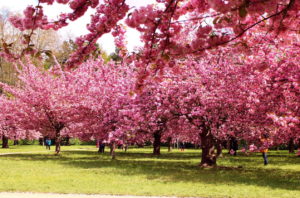
When we think of great things to see and do in Paris, our first thoughts often go to the world famous monuments, incredible museums, fantastic range of food and some of the best shopping in the world. Often overlooked are the wonderful green spaces, all of which contribute to all these unforgettable experiences.
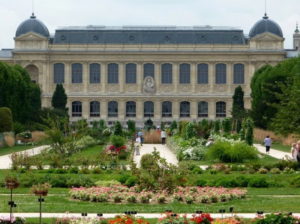
With European spring just about to burst forth, if you’re heading to Paris around this time, add a couple of the city’s great gardens to your itinerary of must-see sights.
Under Napoleon III and his talented team of innovative engineers, landscape designers and gardeners in the 19th century, parks and gardens were the focus of their efforts at enhancing the city.
Largely thanks to this talented group, there are now 504 parks, gardens, squares, walkways and neighbourhood green spaces scattered across the city. All the clichés about spring in Paris are all true! After a long winter, and becoming accustomed to bare trees, it’s such a joy to venture into a garden or park and see blossoms starting to burst forth and buds unfolding on the trees.
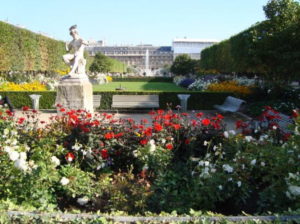
After a busy morning’s shopping or a crowded blockbuster exhibition, it’s so refeshing to find respite in a garden space. After a visit to the Louvre, instead of the expanse of the Tuileries, head instead to the quieter garden of the Palais Royal across the street from the museum.
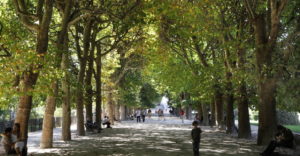
From Notre Dame Cathedral and its constant hordes of visitors, or perhaps exploring the Ile St Louis, the Jardin des Plantes—one of the botanical gardens of Paris—is the perfect place to stroll and refresh the senses.
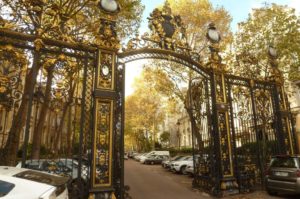
Surrounded by beautiful buildings and sumptuous mansions, including the Musée Cernuschi, the elegant Parc Monceau between the 8th and 17th arr. is a great place to stroll with its meandering paths, plenty of benches, a large pond complete with ducks, and spectacular trees. The park is unusual in France due to its “English” style—its informal layout, curved walkways and randomly placed statues and sculptures of famous French figures such as Guy de Maupassant, Charles Gounod and Ambroise Thomas. The park was established in 1788 by the fabulously wealthy Philippe d’Orléans, Duc de Chartres, a cousin of Louis XVI. His fantasy garden was designed by Carmontelle, and finished in 1779.
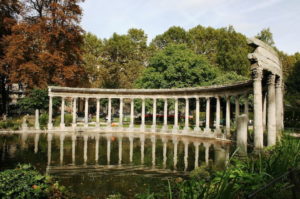
There are a number of the original follies in the park, including a miniature Egyptian pyramid, a Chinese fort, a Dutch windmill and a Corinthian colonnade. In addition to these, the garden featured servants dressed in oriental and other exotic costumes, and unusual animals, such as camels roamed about. Over the years the park underwent various alterations and remodelling as garden fashions changed, and now covers an area of over 8 hectares.
In 1797 Parc Monceau was the site of the first silk parachute jump when André-Jacques Garnerin jumped from a Montgolfier hot air balloon.
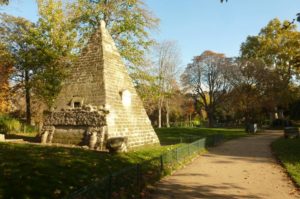
After the restoration of the monarchy, the park was purchased by the city, and in 1861 Baron Haussmann created the first new public park in Paris, as part of the grand transformation of Paris under Emperor Louis Napoleon. Famous figures such as Hector Berlioz and Frederic Chopin loved the park, and Claude Monet painted a series of three paintings of the park in 1876 and two in 1878. The park is open daily, year round. Nearest metro: Monceau (Line 2).
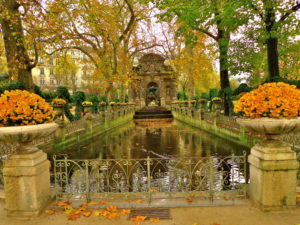
If you visit in the autumn, the Jardin du Luxembourg is the perfect place to visit. Every season, the floral displays, in both the English and French styles are always a joy, but during the autumn they’re at their peak, when huge urns are full of hundreds of chrysanthemums decorate the terraces. It’s a favourite park for young and old alike to sail model boats on the large, ornamental pond, just behind the palace, now the French Senate.
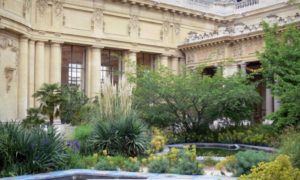
There are so many beautiful parks and gardens that are largely unexplored by most visitors. Aside from those mentioned above, here are some of the lesser-known gardens to add to your list for your next visit.
In April, the double cherry blossoms start to burst forth through the city’s squares and streets, notably at the Jardin des Plantes and the internal courtyard of the Petit Palais art museum.
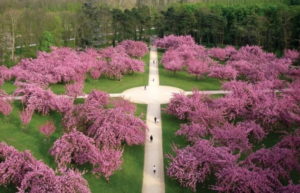
However, by far the best place to experience their beauty must be the Parc de Sceaux. This is located just over 9 kms south of the city. The original garden (with subsequent modifications) was designed by André le Nôtre for Louis XIV’s finance minister, Colbert, in 1670, and stretches over 2 sq.kms.
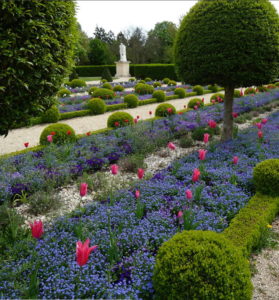
The original Château de Sceaux was demolished and rebuilt in the 19th century and contains the Musée de l’Île-de-France, with a huge collection of paintings of the School of Paris.
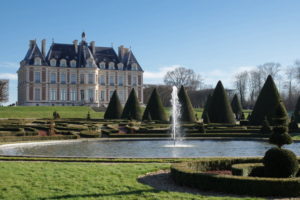
Train line RER B from Gare du Nord will get you there in less than 30 mins., alighting at either Sceaux or Parc de Sceaux.
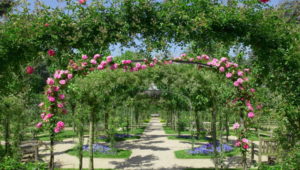
A hidden gem along the banks of the Seine in the town of Boulogne-Billancourt are the gardens of the Musée Albert Kahn to the west of the city. By the age of 40, Kahn owned his own bank and a considerable fortune, although most of this disappeared during the Wall Street crash of 1932. He spent the rest of his life devoted to the promotion of world peace, and his estate and beautiful garden reflect the cultural diversity he so admired.
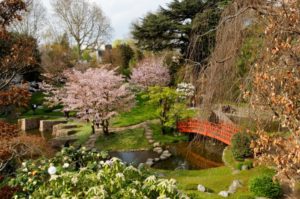
The garden extends over 4 hectares and displays a range of gardening styles and plants. These include a French garden, an English garden, but perhaps most famous of all are the two Japanese gardens designed in 1989 by Fumiaki Takano, featuring Asian plants, including masses of azaleas, a pool, and a village created from dismantled buildings reassembled in the garden. The garden and museum is open Tuesday – Sunday, from the end of April to 01 October. Entry is 4 Euros but its free the first Sunday of each month. To get there, take metro line 10 to Boulogne-Pont de St Cloud or the new tram (Line T2) to Parc de St Cloud.
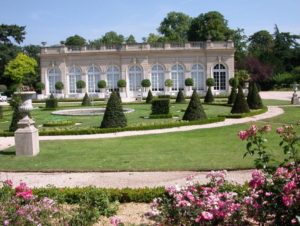
On the far side of the Bois de Boulogne, also on the western side of Paris, is one of the loveliest gardens in Paris, the Parc de Bagatelle, one of the four parks which make up the botanical gardens of Paris—the others being l’Arboretum de l’Ecole du Breuil, the Jardin des Serres d’Auteuil, and the Parc Floral de Paris. The Parc de Bagatelle and its chateau were built in just 64 days following a bet between Marie-Antoinette and her brother-in-law, the Count d’Artois. The park was designed in an Anglo-Chinese style which was very fashionable at the time.
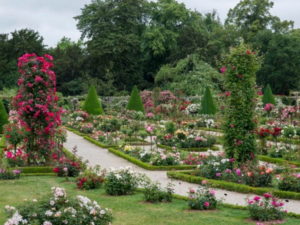
In 1905 the gardens were redeveloped and collections of horticultural specimens were introduced in order to raise public awareness of these plants. Rose gardens were planted and the Roserie de Bagatelle established, with over 10,000 roses across 1,200 different species, which is now home to an international rose competition of new roses, held in June each year. There is also an iris garden and a large pond of aquatic plants and water lilies. If you’re in Paris in the summer months, the park often organises concerts and events over this time. The Parc is open every day, from 01 April to 01 October. Entry is free. To get there, take the metro to Pont de Neuilly then bus line 43, or metro to Porte Maillot then bus line 244.
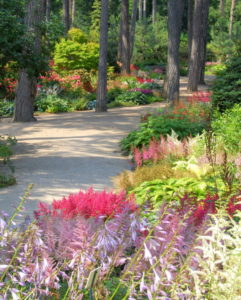
Another of the four botanic gardens of Paris, the Parc Floral de Paris covers 31 hectares in the Bois de Vincennes, near the Château de Vincennes in the 12th arrondissement, and originally a part of a royal park and hunting domain. Under Napoleon lll, a large part of the Bois de Vincennes was made into a public park, although the current Parc was created in 1969 following an international horticultural exhibition. It has a large collection of irises, tulips, dahlias, camellias, rhododendrons, ferns and many other species of plants particularly from Mediterranean regions.
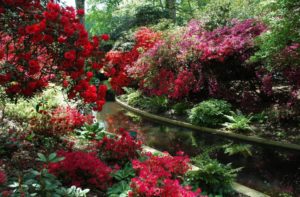
There is a ‘Quartres-Saisons’ (four seasons) garden which has over 200 perennials to discover year round, as well as different themed gardens and exhibitions throughout the year. Bonsai lovers will enjoy the large greenhouse containing a large collection of them. The park is also the venue for numerous free events every summer such as the Paris Jazz Festival, and Festival Classique au Vert.
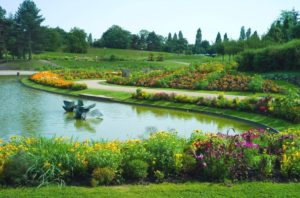
The Parc is open daily, and can be entered either from the Château de Vincennes or from the Route de la Pyramide. Visitors entering from the Château side pass through a forest of cedars and oaks before arriving at the Vallée des Fleurs. The garden is open year round, every day except a number of public holidays. Free entrance from September to June, otherwise €2.50 from May to October. Nearest metro: Château de Vincennes (Line 1).
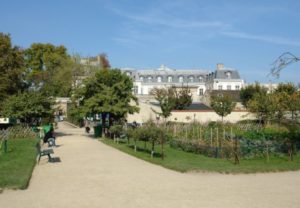
For something completely different, there is a delightful, small community garden of around 7,000 sq.m., just along from Bon Marché department store in the 7th arr., called le Jardin Catherine Labouré. The garden is named after a young 19th century nun to whom the Virgin Mary was said to have appeared as she tended the potager garden of the convent of the Daughters of Charity that was established in 1633.
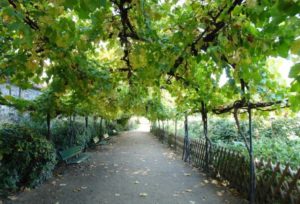
This tranquil spot, virtually unknown to visitors, is a haven for Parisians wanting a quiet, peaceful haven in which to relax, stretch out in the sun on the lawns amidst the greenery, perhaps wander among the fruit trees, vegetable gardens and vine-covered pergola or stroll along the arbor-covered pathways that outline where the convent once stood. The garden opened to the public in 1977. Located at 29, rue de Babylone, 7th arr. Nearest metro: Sevres Babylone (Lines 10 & 12) or St François Xavier (Line 13).
At any time of year, the parks and gardens of Paris offer a respite from all the wonderful sights and activities available in the city. A breather to re-charge the batteries will set you up for discovering even more treasures the City of Light has to offer.
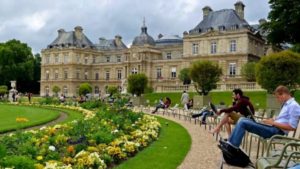
See also the Blog post of 01 July 2018, ‘A little-known Gem – Parc des Buttes-Chaumont’, another fantastic open space, little-known to most visitors to Paris.


How fabulous to have a list and explanations of history of all those amazing gardens. Thank you Cheryl for that information and invitation to viewing and experience even some of those wonderful spaces on my next visit to Paris. Please note I am still thinking positively!
Merci beaucoup.
Pam
Bonjour Pam,
Thank you so much for your warm words of praise! There are so many more beautiful gardens and parks in Paris than just the big, well-known ones. It’s a great way to broaden out one’s experience of the city by adding in a couple of these, and most especially those that are lesser known. I’m going to try and fit in at least one or two new ones each visit.